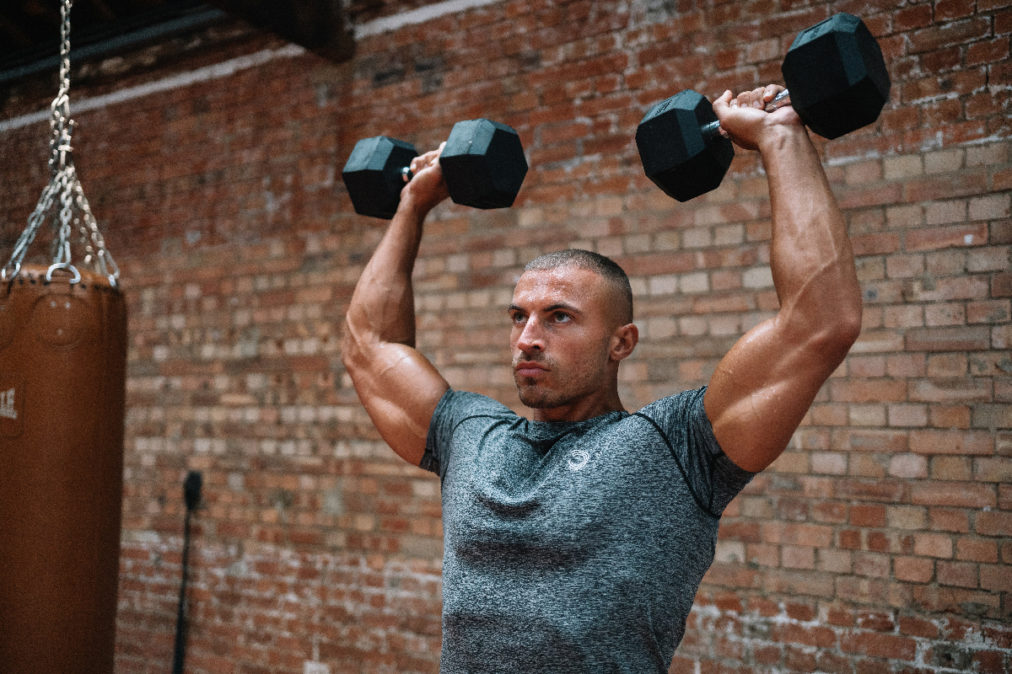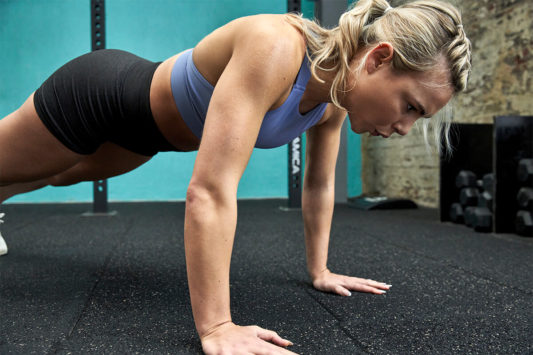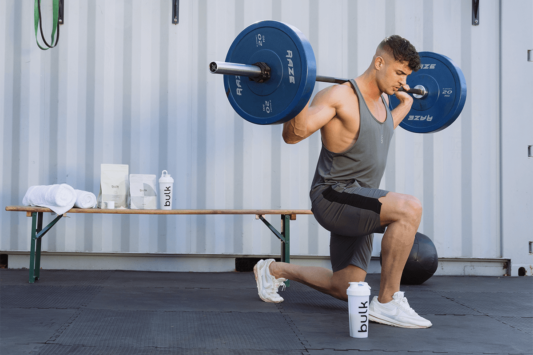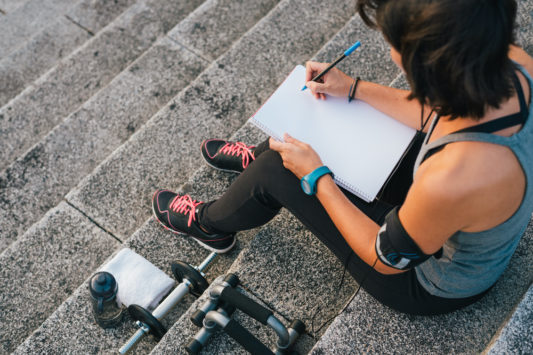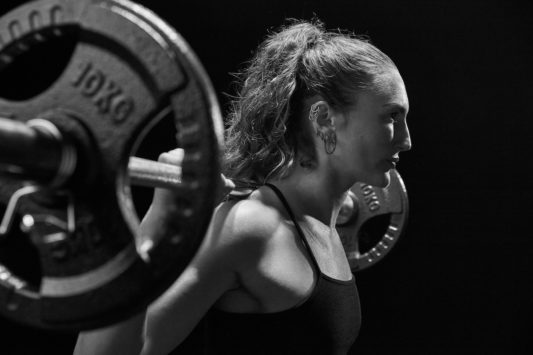Often, clients tell me they’re struggling with ongoing shoulder injuries. It’s an issue that, as you might expect, can severely hinder their training.
The rotator cuff is a complex network of intricate muscles that enables numerous movement actions of the shoulder girdle. It is made up of four muscles, positioned around the shoulder joint – the supraspinatus, infraspinatus, subscapularis and the teres minor. The rotator cuff muscles work together as a unit, helping to stabilise the shoulder joint and also help with shoulder joint movement.
The four tendons join together to form one larger whole, called the rotator cuff tendon. This tendon attaches to the head of the humerus bone (the upper arm), with a space underneath the acromion of the scapula (shoulder blade), called the subacromial space. The rotator cuff tendon passes through here. The subacromial space is filled by the subacromial bursa, which is a fluid-filled sac. This sac helps the rotator cuff to move smoothly and has a large number of pain sensors.
The pain you’re suffering could be as a result of:
- An impingement of the bursa.
- A sprained ligament / tendon or strained muscle. (Rotator cuff tears).
- Calcific tendonitis (Calcific tendonitis is the name given when calcium builds up in the rotator cuff tendon), causing localised pain.
It’s really important that you try to determine which it is – enabling you to seek the most suitable treatment.
Ask yourself:
- Has the joint been over-used during an activity? It might be a tear, causing inflammation.
- Did you feel it happen during a lifting phase & if so what specific movement?
- Has it happened over time and it feels like a shooting pain/restricted movement, whilst performing certain movements? It could be an impingement.
Self-treatment tips
- Straight after any inflammation indicators, use ice treatment to flush the area and reduce swelling/pain.
- Post incident (days later), use heat treatment to shuttle more oxygenated blood to the area for recovery of damaged tissue (more so for muscle damage).
- Stretching & flexibility work to keep the joint as mobile as possible. Don’t push through movements that are painful though – your body is sending you those signals in an attempt to protect the area.
Formal treatment
- Physiotherapy and sports massage treatments are a great idea to analyse your shoulder joint and/or any surrounding soft tissue damage.
- Consult your GP. They may prescribe you some appropriate painkillers or anti-inflammatory medication.
- If the injury requires an ultrasound or MRI scan to show any rotator cuff tears – this may be an option. Rotator cuff tears won’t show up on X-rays. X-rays will only show any bone structure issues, fractures or breaks.
- Your GP may refer you for steroid injections or surgery if the injury is severe.
Common causes in the gym
- Over-stretching the chest & shoulder muscles by retracting the shoulder girdle too much. For example, retracting the upper arm too far back when performing a pec-fly, or a flat bench press movement – lowering the upper arm so far behind the body line placing huge amounts of stress on the rotator cuff.
- If your range of movement is restricted around the shoulders, some gym users won’t benefit from behind the head pressing or behind the head lat pull downs.
Top tips
- To relieve stress on your rotator cuff whilst bench pressing, put a slight 10-15 degree incline on the bench.
- Avoid dropping your upper arm too far below your body line in press and fly movements, if this is causing over-stretching.
- Before any weights workouts, perform a 4-5 minute cardio warm up on the rowing machine – to increase your heart rate and blood flow. Then do 2-3 sets of very light rotator cuff exercises with dumbbells or resistance bands. This will include internal/external rotation, abduction (lateral raises), shoulder flexion and outward rotation. Search online for images of these moves for clarity.
The rotator cuff is a precious, intricate structure. I can’t reinforce enough the benefits of both strengthening it and looking after it. I recommend using perfect technique through a full range of motion, warming up thoroughly before exercise and not pushing the shoulder joint beyond its limits in the gym, as this may see you nursing a niggling injury for a long time. Ensure you cool down and use static stretches to lengthen the worked muscles, upon completion of your workouts.
About the Author
Ben Rowe is the Lead Coach at Team Benbo Body Coaching. Team Benbo have over 10 years of experience in the fitness industry, sharing their in-depth knowledge around Sports Specific Training, Nutrition, Online Coaching and Competition Preparation.
